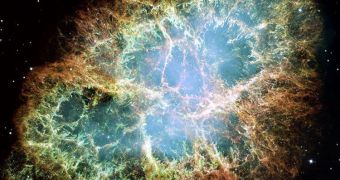Fergus Wilson, a theoretical astrophysics student from the University of Leicester, in the United Kingdom, is currently developing a new technique for modeling fluids that he says could hold the key towards uncovering a number of mysteries still related to studies of the Universe. The method he's developing is akin to the one currently employed in the movie industry, in order to make special effects look more realistic to viewers. The fluid modeling simulation will, when complete, be able to account for how mass is distributed among two members of a binary star system, for example.
The computational method is called Smoothed Particle Hydrodynamics (SPH), and people have seen it in action without knowing in movies such as The Matrix Reloaded. It can basically model a fluid as a set of moving, interacting particles. This allows it to calculate and solve the equations that dictate the interactions between two or more particles. But Wilson uses it not for special effect, but for simulating how dying massive stars explode into supernovae. His interest in particular is the explosive eruption that marks the end of a star's burning cycle, and the beginning of its supernova phase. The new technique proves to be extremely suited for such applications, he says.
“Transferred material from one star in the binary system will form a disc with some of it 'gobbled up' by the accreting [accumulating] star. The accreting star then blows off some of this 'gobbled up' material when the pressure becomes too large. This material forms a blast wave and is blown off into the remainder of the disc. How much of the original accreted mass remains on the accreting star will determine how much mass the accreting star will gain or lose during this process. If the accreting star continues to gain mass it will reach a critical limit and the whole star will explode and a supernova will occur,” the student explains.
“All Type Ia supernovae have the same characteristic luminosity which makes them ideal for measuring astronomical distances. They are used as standard candles by astronomers to determine the distance of celestial objects and have allowed astronomers to measure the distances to galaxies at the edge of the known Universe, providing vital clues into the rate the Universe is expanding. Clearly understanding how Type Ia supernovae work is of fundamental importance in the quest of understanding how the Universe works as astronomical distances can be measured which are crucial to understanding the fate of the Universe,” he concludes.

 14 DAY TRIAL //
14 DAY TRIAL //